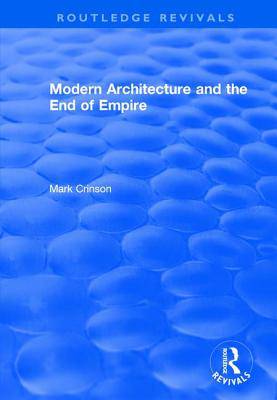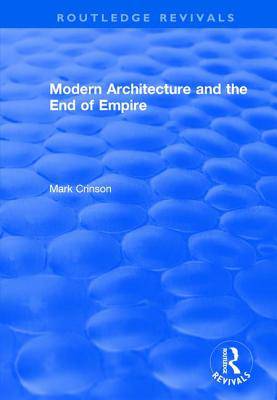
- Afhalen na 1 uur in een winkel met voorraad
- Gratis thuislevering in België vanaf € 30
- Ruim aanbod met 7 miljoen producten
- Afhalen na 1 uur in een winkel met voorraad
- Gratis thuislevering in België vanaf € 30
- Ruim aanbod met 7 miljoen producten
Zoeken
€ 195,95
+ 391 punten
Uitvoering
Omschrijving
This title was first published in 2003: Modernist architecture claimed to be the 'international style' but the relationship between modernism and the new dispositions of nations and nationalities which have succeeded the old European empires remains obscure. In this, the first book to examine the interactions between modern architecture, imperialism and post-imperialism, Mark Crinson looks at the architecture of the last years of the British Empire, and during its prolonged dissolution and aftermath. Taking a number of case studies from Britain, Ghana, Hong Kong, Iran, India and Malaysia, he investigates the ambitions of the people who commissioned the buildings, the training and role of architects, and the interaction of the architecture and its changing social and cultural contexts. This book raises questions about the nature of modernism and its roles that look far beyond empire and towards the post-imperial.
Specificaties
Betrokkenen
- Auteur(s):
- Uitgeverij:
Inhoud
- Aantal bladzijden:
- 254
- Taal:
- Engels
- Reeks:
Eigenschappen
- Productcode (EAN):
- 9781138039926
- Verschijningsdatum:
- 26/09/2017
- Uitvoering:
- Hardcover
- Formaat:
- Genaaid
- Afmetingen:
- 175 mm x 246 mm
- Gewicht:
- 521 g

Alleen bij Standaard Boekhandel
+ 391 punten op je klantenkaart van Standaard Boekhandel
Beoordelingen
We publiceren alleen reviews die voldoen aan de voorwaarden voor reviews. Bekijk onze voorwaarden voor reviews.











